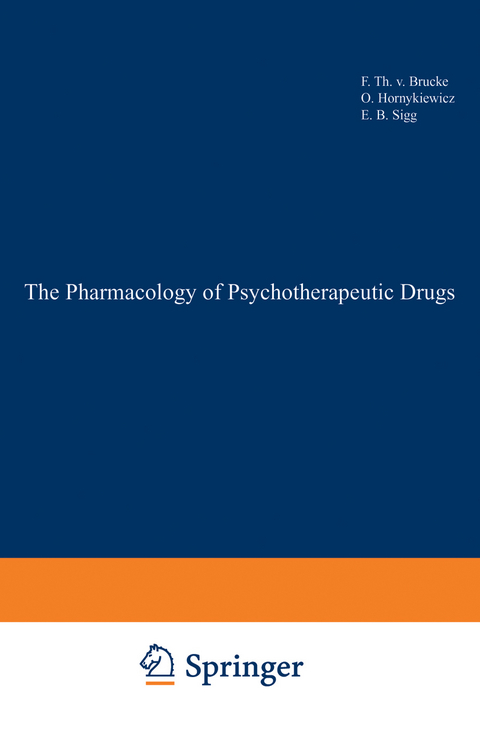
The Pharmacology of Psychotherapeutic Drugs
Springer-Verlag New York Inc.
978-0-387-90009-4 (ISBN)
The experience gained from studies of human and animal behavior found expression in the attempt to introduce a nomenclature and classify psychopharmaka on a purely psychological basis.
I. Phenothiazine Derivatives.- A. Structure-activity Relationships.- B. Peripheral Effects.- C. Central Effects.- D. Endocrine Effects.- E. Metabolic Fate of Phenothiazines.- F. Habituation and Withdrawal.- G. Adverse Reactions and Treatment Risks.- II. Butyrophenones.- A. Structure Activity Relationships.- B. Peripheral Effects.- C. Central Effects.- D. Biochemical Effects.- E. Adverse Reactions and Dangers.- III. Reserpine and Reserpine-like Agents.- A. Structure-activity Relationships.- B. Peripheral Effects.- C. Central Effects.- D. Endocrine Effects of Reserpine.- E. Metabolic Fate of Reserpine.- F. Adverse Reactions and Dangers.- IV. Minor Tranquilizers.- A. Central Effects.- B. Peripheral Effects.- C. Metabolic Studies.- D. Adverse Reactions.- V. Monoamine Oxidase Inhibitors.- A. The Physiologic Significance of Monoamine Oxidase.- B. Classification of MAO-inhibitors and their Structure-activity Relationship.- C. Biochemical and Pharmacologic Effects of MAO-inhibitors.- D. Fate of MAO-inhibitors in the Body.- E. Adverse Reactions and Dangers.- VI. Thymoleptics.- A. Peripheral Effects.- B. Central Effects.- C. Metabolic Fate.- D. Adverse Reactions.- VII. Chemical Structures, General Clinical Use and Daily Human Rose Range of the most Frequently Used Psychotherapeutic Drugs.- Abbreviations.
| Erscheint lt. Verlag | 1.1.1969 |
|---|---|
| Reihe/Serie | Heidelberg Science Library |
| Überarbeitung | E. B. Sigg |
| Übersetzer | E. B. Sigg |
| Zusatzinfo | VIII, 158 p. |
| Verlagsort | New York, NY |
| Sprache | englisch |
| Maße | 152 x 229 mm |
| Themenwelt | Medizin / Pharmazie ► Medizinische Fachgebiete ► Pharmakologie / Pharmakotherapie |
| Medizin / Pharmazie ► Medizinische Fachgebiete ► Psychiatrie / Psychotherapie | |
| Medizin / Pharmazie ► Pflege | |
| Medizin / Pharmazie ► Pharmazie | |
| ISBN-10 | 0-387-90009-8 / 0387900098 |
| ISBN-13 | 978-0-387-90009-4 / 9780387900094 |
| Zustand | Neuware |
| Informationen gemäß Produktsicherheitsverordnung (GPSR) | |
| Haben Sie eine Frage zum Produkt? |
aus dem Bereich


